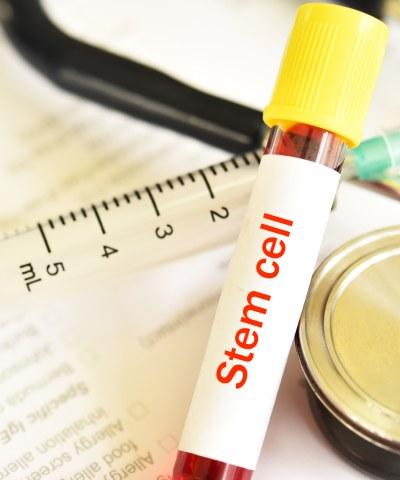STEM CELL BANKING IN INDIA: ULTIMATE GUIDE

Stem cell banking in India has been booming lately. Though companies approach us with attractive claims of cure from many diseases, is stem cell banking credible? Also, with costs going upwards of few thousands to several thousands, is it worth the cost? Keep reading as we discuss the pros, cons and the best way to preserve your baby’s cord blood!
What are stem cells?
Our body is made up of many different types of cells. The cells in the heart are different to those in the brain, liver or intestines. Stem cells are like undecided basic blocks – under the right conditions, they can grow into any of these cells! Stem cells can become bones, blood, nerves or any other cell in our body.
These stem cells are found in abundance within the umbilical cord fluid, which is usually discarded at birth. We adults also have stem cells in our bone marrow and in some fat tissues. Stem cells from the umbilical cord are easier to collect, are richer in quantity and are safer as they don’t carry any microbes or infectious diseases.
How are stem cells collected and stored?

After the baby is born and doctors usually cut the cord and clamp it near the baby’s belly button. From the discarded cord, 70 ml of blood is collected to harvest stem cells. It only takes a minute and is completely painless for both the mother and baby. The blood is then sent to the bank, where it is tested, separated and preserved at -196 degrees with liquid nitrogen. Although there is no expiry date for preservation, most banks store it for 21 to 24 years.
Is stem cell banking useful in India?
Here are some of the benefits of stem cell banking in India.
- Around 10,000 kids every year birth with thalassemia and over a lakh people every year get diagnosed with leukemia. It can be anguishing to imagine such diseases gripping our little ones, but it is more tormenting to see the cure for these diseases and the way to save many kids thrown away in the trash. Stem cells can be used for treating around 70 blood related disorders like sickle cell anemia, leukemia, and immune disorders.
- Your baby’s stem cells can be used for your immediate family in case any of them develop a situation where they need stem cell transplant. Cord blood stem cells are readily accepted by the body even when they are not a perfect match – just matching 4 out of 6 markers can make a transplant successful.
- While as of now our capabilities to utilize these stem cells are still in its infancy, it is optimistic to believe that the rapid research and fast advancing tech will lead to many more uses for these cells in the next 20 years.
The other side of stem cell banking in India
Parents’ love and their feelings of obligation towards their babies is often exploited by some stem cell banking reps, who market stem cells as the cure for everything. The emotional marketing of such stem cell banks can be anxiety inducing for moms-to-be at their most vulnerable time. Here are few facts to consider before you sign up for stem cell banking in India.
- Your baby’s own stem cells cannot be used to cure genetic disorders because the stem cells also carry the same gene mutation. Babies with thalassemia cannot use their own stem cells for treatment, because when those stem cells are developed, they will carry the same genetic disorder. Stem cells of a heathy person are needed for treatment.
- Some private banks also sign you up to store the umbilical cord tissue, the menstrual blood after birth, the fat tissue and the dental pulp, which currently have no scientific evidence of being useful. While it is true that some of these may contain stem cells, the count is too low for any beneficial treatments. Stem cells from your own bone marrow are a far better grade than from these tissues.
- Though stem cells can be beneficial in many ways, only six medical conditions are currently treated using stem cells in India – bone marrow failure, thalassemia, sickle cell anemia, bone cancer, metabolic errors, and immune system disorder from birth. Claims of stem cells being beneficial for diabetes, heart problems, cerebral palsy or spinal cord injury are baseless claims in the current scenario. The chances of your baby or your relatives needing the blood are 0.01%. Everyone must be free to preserve the cells if they wish to, but projecting it as a panacea for all diseases and luring poor families with false claims are to be condemned.
- The desire to delay cord clamping is on the rise among many expecting mothers. While we say delayed clamping, it was actually the norm to delay cord cutting by a minute to up to 5 minutes in the ye olden days. This allows all the blood from the cord to drip into the baby which prevents the development of anemia. To harvest stem cells, the cord must be clamped withing 60 seconds, which makes some moms choose between the two.
Which stem cell banking is best in India?
Donating your baby’s cord blood to public stem cell banks or a community stem cell bank is the best way of stem cell banking in India. Donating to a fully public stem cell bank will help you save the life of another precious baby in their time of great need. Choosing a private run community-based stem cell banking allows you to share stem cells among members to get help if needed.
Who should choose private stem cell banking?
If either of the biological parents or siblings of the baby have preexisting blood conditions that are currently treated using allogenic stem cell transplantation, then preserving your baby’s stem cells privately, just for you can be beneficial in treatment for you or the siblings.
How much does stem cell banking cost in India?
- Lifecell offers community blood banking where members of lifecell can share cord blood among themselves if the need arises. Plans start from Rs. 19,990 with annual storage fees of Rs. 4000.
- Lifecell 75 years storage costs Rs. 19,990 + Rs. 45000.
- Cordlife preserves stem cells for 21 years for one-time fee of Rs. 45,750.
- Cryovivia preserves stem cells for 21 years at a one-time fee of Rs. 50,000.
- Biocell preserves both stem cells and tissues for 21 years at one time charges of Rs. 59,000.
- Cordcare offers 21 years preservation at Rs. 65,000.
- Cryo stemcell offers preservation at Rs. 25,000 initial and Rs. 3000/ year after.
- Stem cyte India offers 21 years preservation at Rs. 75,000 including blood and tissue.
You will be charged extra for sample collection (Rs. 3000), document charges and transportation charges. Unused cells after 21 years are donated.
Who cannot use stem cell banking?

You are not eligible for stem cell banking if:
- You have had a live vaccine during pregnancy. (e.g., yellow fever, rubella)
- You or your partner have ever had HIV, HTLV, Hep B or C, malaria, blood diseases, cancer.
- You are a surrogate.
- You had shingles, chickenpox or toxoplasmosis during pregnancy.
- You or your partner have a history of degenerative neurological problems like dementia, Parkinson’s or Alzheimer’s.
- You are pregnant with twins, have had hormone treatments, fertility treatment, blood transfusion, steroid medication, organ transplant, or drug abuse.
Public Stem Cell Banking in India
- Jeevan stem cell bank at BeTheCure.com turned 25 years old in 2020! This is the first public cord cell bank in India, founded with funding from Tamil Nadu.
- The School of Tropical Medicine (STM), Kolkata is government funded public cord blood bank launched in 2015.
- Reliance Dhirubhai Ambani life sciences center offers both public and private storage.
- StemCyte India is a joint venture between Cadila pharmaceuticals and Apollo hospital enterprises, that offers both public and private cord blood storage.
- Lifecell is India’s first private stem cell banking with two storage facilities in Chennai and Gurgaon. When it reached 1,00,000 preservation in Chennai, lifecell opened a community stem cell banking facility to share cord blood among its members. LifeCell is India’s largest and world’s 3rd largest stem cell bank.
Is stem cell banking legal in India?
A 2017 ban was imposed against persevering tissues and blood other than the cord blood as our limitations of today make them useless. Cord blood banking is legal in India but there are no set standards for proper preservation or accreditations.
Is stem cell banking worth in India?
Stem cell banking can be lifesaving in some very unlikely scenarios that no parents on earth would be prepared for. However, we mustn’t allow ourselves to be exploited by our fears, and understand that cord blood banking is not a biological insurance. If you have the means, it isn’t wrong to bank your baby’s blood – just make sure you can see through the hype and understand its limitations to make an informed decision.